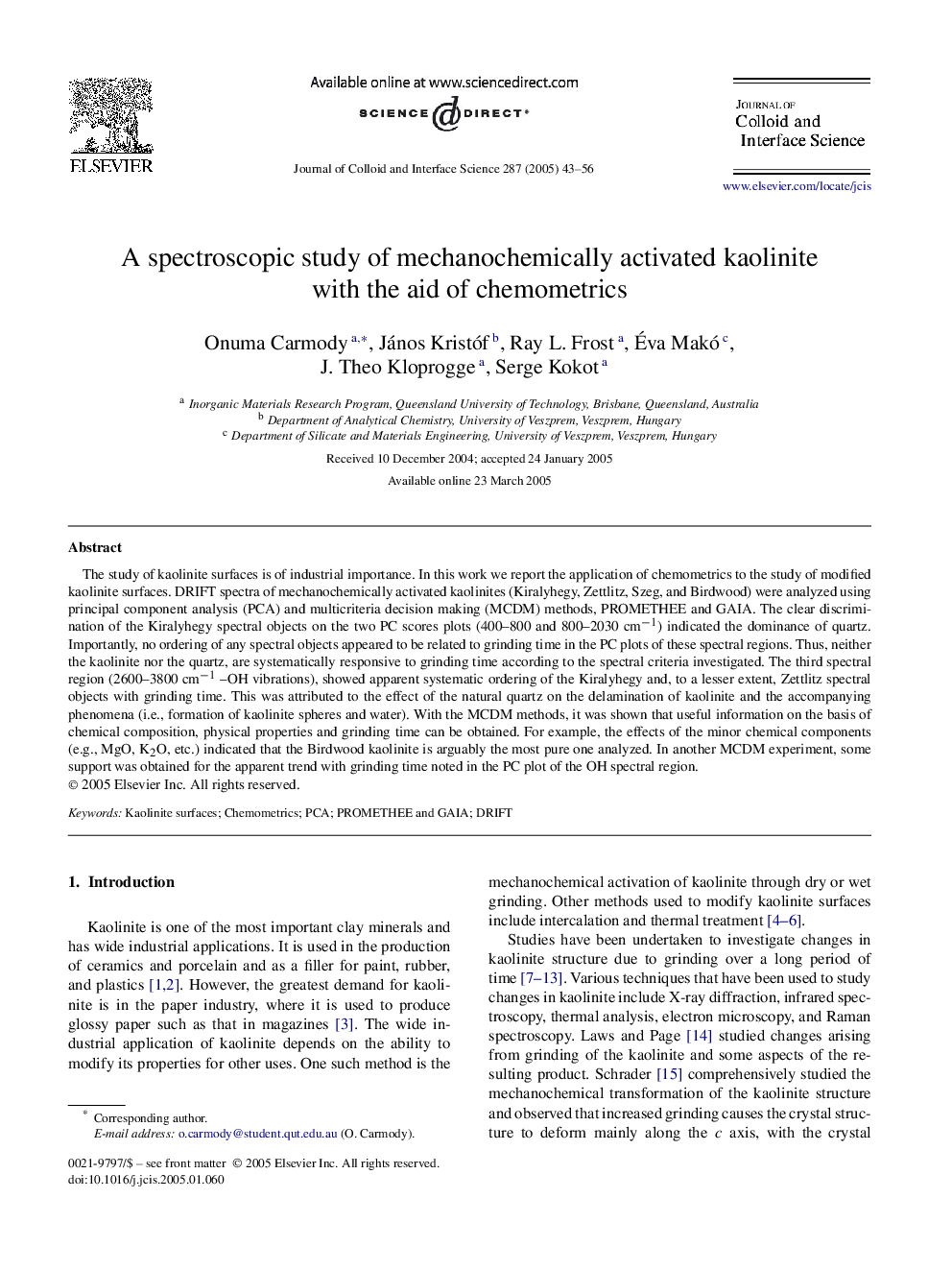| Article ID | Journal | Published Year | Pages | File Type |
|---|---|---|---|---|
| 10378007 | Journal of Colloid and Interface Science | 2005 | 14 Pages |
Abstract
The study of kaolinite surfaces is of industrial importance. In this work we report the application of chemometrics to the study of modified kaolinite surfaces. DRIFT spectra of mechanochemically activated kaolinites (Kiralyhegy, Zettlitz, Szeg, and Birdwood) were analyzed using principal component analysis (PCA) and multicriteria decision making (MCDM) methods, PROMETHEE and GAIA. The clear discrimination of the Kiralyhegy spectral objects on the two PC scores plots (400-800 and 800-2030 cmâ1) indicated the dominance of quartz. Importantly, no ordering of any spectral objects appeared to be related to grinding time in the PC plots of these spectral regions. Thus, neither the kaolinite nor the quartz, are systematically responsive to grinding time according to the spectral criteria investigated. The third spectral region (2600-3800 cmâ1OH vibrations), showed apparent systematic ordering of the Kiralyhegy and, to a lesser extent, Zettlitz spectral objects with grinding time. This was attributed to the effect of the natural quartz on the delamination of kaolinite and the accompanying phenomena (i.e., formation of kaolinite spheres and water). With the MCDM methods, it was shown that useful information on the basis of chemical composition, physical properties and grinding time can be obtained. For example, the effects of the minor chemical components (e.g., MgO, K2O, etc.) indicated that the Birdwood kaolinite is arguably the most pure one analyzed. In another MCDM experiment, some support was obtained for the apparent trend with grinding time noted in the PC plot of the OH spectral region.
Related Topics
Physical Sciences and Engineering
Chemical Engineering
Colloid and Surface Chemistry
Authors
Onuma Carmody, János Kristóf, Ray L. Frost, Ãva Makó, J. Theo Kloprogge, Serge Kokot,
